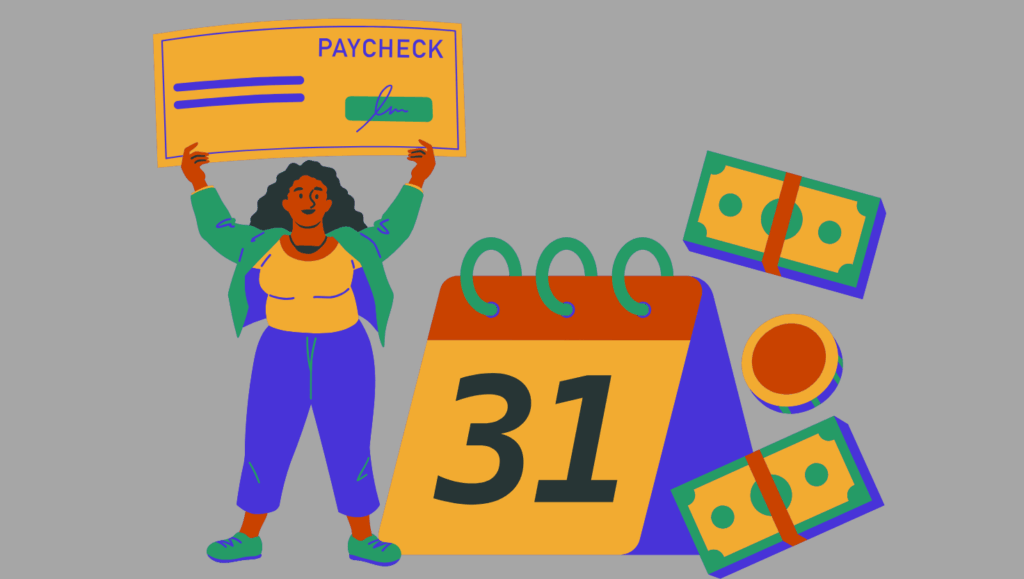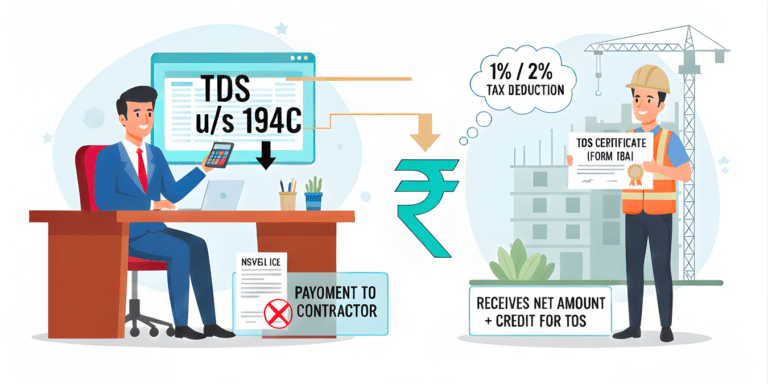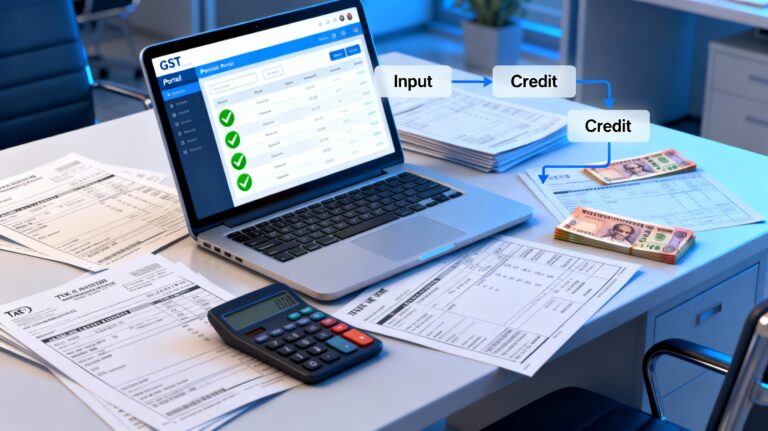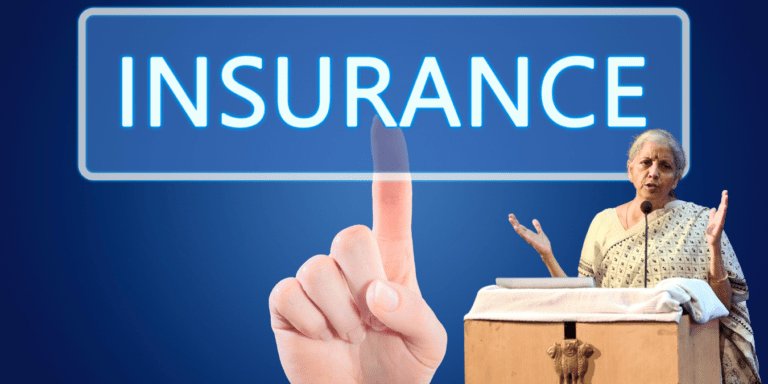
Will India’s 2025 GST reforms put extra rupees in your wallet? Imagine cheaper groceries, mobiles, and essentials with slashed tax slabs—5% and 18% only! From ₹350 monthly savings on food to ₹5,000 off gadgets, the suspense is real. How will Diwali 2025 spark your finances?
Opening your budgeting app to find extra rupees piling up—unspent, ready for that dream vacation or a rainy-day fund. What if India’s tax system was the secret behind this financial windfall? The proposed GST reforms for 2025 promise exactly that, sparking curiosity across households and businesses alike. How will these changes transform your wallet? Let’s unravel the suspense behind India’s next-generation tax overhaul.
The GST Revolution: A Quick Recap
Since its inception in 2017, the Goods and Services Tax (GST) reshaped India’s indirect tax landscape, replacing a maze of state and central levies. Yet, complexity persists with four tax slabs—5%, 12%, 18%, and 28%—often inflating costs for essentials. Consumers feel the pinch, but the proposed GST reforms for 2025 aim to simplify this structure, promising direct savings. Curious about the impact? Let’s dive in.
A Diwali Bonanza: Modi’s Big Reveal
In his August 2025 Independence Day speech, Prime Minister Narendra Modi announced “next-generation” GST reforms, targeting a consumer-centric overhaul by Diwali 2025. These changes aim to benefit the poor, middle class, traders, and entrepreneurs. The suspense is palpable: what exactly does this mean for your monthly budget? The answer lies in a leaner, cleaner tax system.
Simplifying the Slabs: A Game-Changer
The cornerstone of the 2025 GST reforms is a bold move to slash the current four slabs to two main rates: 5% for merit goods and 18% for standard items, with a special 40% rate for luxury and sin goods like tobacco and alcohol. The 12% and 28% slabs will largely disappear for most products. This simplification could redefine affordability, but how much will you save? Let’s break it down.
Everyday Essentials: Cheaper Overnight
Picture this: 99% of items currently taxed at 12%—think butter, fruit juices, and packaged snacks—shifting to the 5% slab. For a family spending ₹5,000 monthly on such goods, a 7% tax reduction translates to ₹350 in savings each month. That’s ₹4,200 annually—enough for a weekend getaway or a new gadget. The suspense builds: what else gets cheaper?
High-End Goods: A Middle-Class Win
The 28% slab, home to high-end items like electronics and appliances, will see 90% of its goods move to 18%. Imagine upgrading your smartphone or buying a new refrigerator at a lower cost. For a ₹20,000 mobile phone, a 10% tax cut could save you ₹2,000. Middle-class households stand to gain significantly, making aspirational purchases more accessible.
Focus on Essentials: Your Daily Needs
The proposed GST reforms prioritize essentials—items like soaps, toothpaste, garments, and packaged foods are likely to fall under the 5% slab. Government sources suggest this could reduce household expenses by 5-10% on average. For low-income families, where essentials dominate budgets, these savings are life-changing. How much could you save on your grocery bill? Let’s explore.
Boosting FMCG: More Savings, More Spending
Recent data from the GST Council projects an 8-10% growth in the Fast-Moving Consumer Goods (FMCG) sector post-reform, driven by increased consumer spending. Lower taxes on packaged foods, like a ₹100 pack of biscuits dropping to ₹95, mean small but frequent savings. Multiply that by weekly purchases, and your grocery budget stretches further. Curious about the ripple effect?
Merit Goods: Empowering the Masses
Merit goods—essentials like fortified rice kernels, already at 5%—will see broader categories included. This directly benefits low-income households, where food consumes up to 50% of budgets. A ₹10 saving per liter of fruit juice or a 7% reduction on clothing could mean hundreds of rupees monthly for families. The reforms’ focus on equity is clear, but what’s the mechanism behind it?
How It Works: Simplification Saves
The current multi-slab system creates cascading tax effects, inflating prices. By streamlining to two slabs, the proposed reforms eliminate these inefficiencies, reducing the overall tax incidence. This mechanical shift ensures that savings reach consumers directly, without hidden costs. The suspense lies in the numbers—how much exactly will you pocket?
Economic Ripple: A GDP Boost
Economists predict a 2-3% GDP boost from increased consumption triggered by these reforms. More money in your wallet means more spending, creating a virtuous cycle of economic growth. For instance, lower GST on consumer durables like TVs and air conditioners could spur demand, further fueling the economy. Excited yet? There’s more to uncover.
The Catch: Sin Goods Pay the Price
To maintain revenue neutrality, sin goods like tobacco and luxury items will face a 40% GST rate. This ensures the government can fund these tax cuts without fiscal strain. Smokers and luxury buyers may feel the pinch, but for most consumers, this trade-off means more savings. The question remains: will this balance hold?
Services Sector: Travel and More
The reforms also hint at rationalized rates for services like hotel accommodations. While details are pending, cheaper travel could be on the horizon, especially for hotels charging over ₹7,500 per night, which may see adjusted rates with Input Tax Credit (ITC) benefits. Curious about your next vacation? Stay tuned for updates.
MSMEs: Lower Costs, Lower Prices
For Micro, Small, and Medium Enterprises (MSMEs), simplified GST compliance reduces operational costs. These savings are likely to be passed on to consumers through lower prices, benefiting small traders and buyers alike. The ripple effect? More affordable goods and a thriving small business ecosystem.
Latest Updates: August 2025
As of August 2025, the GST Council is actively reviewing these proposals, with Finance Minister Nirmala Sitharaman leading discussions. States are urged to cooperate for a Diwali rollout, aiming for a single tax slab by 2047. The immediate focus, however, is on delivering consumer relief in 2025. What’s next? The suspense continues.
Specific Savings: Breaking It Down
Let’s get specific. Fruit juices moving from 12% to 5% could save ₹10 per liter. For a family buying 10 liters monthly, that’s ₹100 saved. Garments shifting from 12% to 5% mean a 7% reduction on clothing bills—potentially ₹700 saved on a ₹10,000 back-to-school shopping spree. Mobiles and electronics at 18% instead of 28%? A ₹50,000 laptop could cost ₹5,000 less.
Equity in Action: Who Benefits Most?
The proposed GST reforms prioritize equity, with the poor and middle class reaping the most benefits. PM Modi emphasized this in his Red Fort address, noting that lower rates on essentials will ease financial burdens for millions. Rural households, where essentials dominate budgets, could see even greater relief. How will this reshape your finances?
Economic Efficiency: Less Evasion, More Savings
Data from The Economic Times highlights that a two-slab system reduces tax evasion, ensuring more revenue for welfare schemes and consumer-friendly policies. This efficiency translates to direct savings, as businesses pass on lower tax burdens. The suspense lies in how smoothly this transition occurs.
Exemptions: Will They Expand?
Currently, basics like milk and fresh produce are GST-exempt at 0%. Proposals suggest more essentials could join this category, further boosting savings. While details are under wraps, the potential for broader exemptions adds to the anticipation. Will your favorite products make the cut?
FMCG Growth: Happier Households
The FMCG sector is poised for a boom, with Livemint reporting that lower rates on packaged goods will spur demand. Cheaper snacks, toiletries, and household items mean happier households and more disposable income for discretionary spending. Curious about the brands that will benefit?
Estimating Your Savings
For an average urban family spending ₹20,000 monthly on GST-taxed items, a 5-7% tax reduction could mean ₹1,000-1,400 in monthly savings. That’s ₹12,000-16,800 annually—enough for a family vacation or a significant investment. Rural families, with higher spending on essentials, could save even more. The numbers are exciting, but will they hold?
Rural Impact: Food Prices Drop
Farmers benefit from enhanced Input Tax Credits (ITC), indirectly lowering food prices. With essentials dominating rural budgets, a 5-10% reduction in costs could significantly improve living standards. The reforms’ rural focus adds another layer of intrigue—how will this transform village economies?
A Consumer-First Approach
Unlike past tweaks, these reforms are uniquely consumer-first. The Finance Ministry began working on this plan post-Budget 2025, aiming to make GST a “Good and Simple Tax.” The suspense builds as the GST Council finalizes details, promising a Diwali gift for every Indian.
Inflation Control: A Hidden Benefit
Lower taxes could curb inflation, experts say, as reduced costs for goods and services ease price pressures. With inflation moderated, your purchasing power grows, amplifying the reforms’ impact. Curious about the long-term effects? The economy is watching closely.
Entrepreneurs: A Win-Win
For entrepreneurs, simplified GST compliance means lower costs and fewer headaches. This efficiency fuels business growth, job creation, and ultimately, more income for consumers. The reforms’ ripple effect could reshape India’s economic landscape. What’s the next big reveal?
Diwali 2025: A Financial Firecracker?
As Diwali 2025 approaches, the GST Council’s meetings will finalize these reforms. Will they light up your finances as promised? The anticipation is high, with multiple meetings planned to ensure a smooth rollout. Stay tuned for the grand reveal.
Summary: Save, Spend, Thrive
The proposed GST reforms for India in 2025 simplify taxes, save money, and stimulate growth. With lower rates on essentials, reduced costs for electronics, and a consumer-first approach, your wallet is set to benefit. From ₹350 monthly savings on groceries to ₹5,000 on a new laptop, the numbers add up. As the GST Council finalizes details, the promise of a “Good and Simple Tax” looms large, ready to transform your financial future. Curious? Your wallet is about to thank you.

































